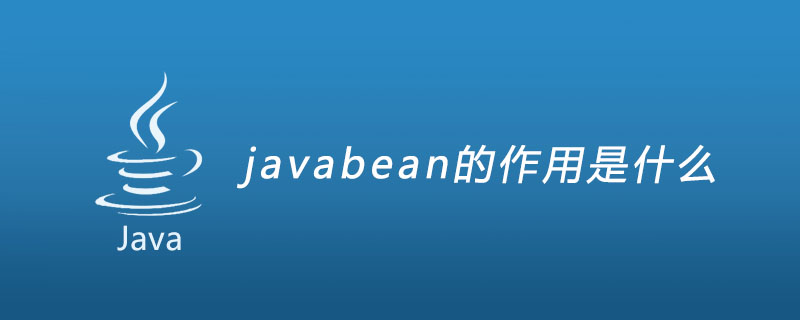
JavaBean is a reusable component written in JAVA language. To be written as a JavaBean, a class must be concrete and public, and have a parameterless constructor.

JavaBean exposes member properties of the internal domain by providing public methods that conform to the consistent design pattern, and can be obtained by set and get methods. As we all know, the property names conform to this pattern, and other Java classes can discover and manipulate the properties of these JavaBeans through the introspection mechanism (reflection mechanism).
The role of javabean
Some specific main design goals of JavaBean:
1. Compact and convenient creation and use
The requirement for JavaBean compactness is based on the fact that JavaBean components are often used in distributed computing environments, which makes JavaBean components often need to be transmitted in a limited bandwidth connection environment. Obviously, in order to adapt to the efficiency and speed of transmission, JavaBean components must be as compact as possible. In addition, in order to better create and use components, you should make them as simple as possible. Usually, in order to improve the simplicity and compactness of components, the design process requires relatively large efforts.
Existing component software technologies usually use complex APIs, which often makes developers confused when creating components. Therefore, JavaBean components must not only be easy to use, but also easy to develop. This is crucial for component developers, because it eliminates the need for developers to spend a lot of effort on programming using APIs, allowing them to better polish the components and improve the viewability of the components.
JavaBean components are mostly based on the existing class structure of traditional Java programming, which is very beneficial to developers who are already proficient in using the Java language. And this can make JavaBean components more compact, because the Java language has absorbed a lot of advantages from previous programming languages in programming, and has made the developed programs quite efficient.
2. Complete portability
The JavaBean API is combined with the platform-independent Java system based on the operation to provide a platform-independent component solution. Therefore, component developers no longer have to worry about having class libraries specific to the Java applet platform. The end result will be reusable components shared across the computing community and executed without modification on any Java-enabled system.
3. Inherit the powerful functions of Java
The existing Java structure already provides a variety of functions that are easy to apply to components. One of the more important ones is Java's own built-in class discovery function, which allows objects to dynamically interact with each other at runtime, so that objects can be independent from the development system or their development history.
For JavaBean, since it is based on the Java language, it naturally inherits this very important function for component technology and no longer requires any additional overhead to support it.
JavaBean inheritance has another important aspect in existing Java functionality, which is persistence, which saves objects and obtains the internal state of objects. Through the serialization mechanism provided by Java, persistence can be automatically handled by JavaBeans. Of course, developers can also create customized persistence solutions when needed.
4. Application constructor support
Another design goal of JavaBean is the issue of design environment and how developers use JavaBean to create applications. The JavaBean architecture supports specifying design environment properties and editing mechanisms to facilitate visual editing of JavaBean components. This way developers can use the visual application builder to seamlessly assemble and modify JavaBean components. Just like the visual development tool VBX or OCX control processing components on the Windows platform. In this way, component developers can specify how the component is used and manipulated in the development environment.
5. Distributed computing support
Although supporting distributed computing is not a core element in the JavaBean architecture, it is also a major issue in JavaBean.
JavaBean allows developers to use distributed computing mechanisms at any time, but does not put additional burden on themselves by using the core support of distributed computing. This is due to the compactness of JavaBean components. Undoubtedly, distributed computing requires a lot of additional overhead.
The above is the detailed content of What is the function of java beans. For more information, please follow other related articles on the PHP Chinese website!